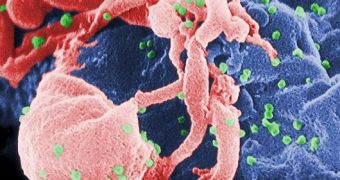Experts working with the AIDS Institute at the University of California in Los Angeles (UCLA) have recently announced that they managed to find a type of stem cells that could fight against HIV. The cells can be activated in such a manner, that they instantly start searching and attacking all cells that have been infected with the retrovirus. The abilities displayed by these human blood stem cells could be widely used in the near future to create cures for a large number of chronic viral diseases, PhysOrg reports.
“We have demonstrated in this proof-of-principle study that this type of approach can be used to engineer the human immune system, particularly the T-cell response, to specifically target HIV-infected cells. These studies lay the foundation for further therapeutic development that involves restoring damaged or defective immune responses toward a variety of viruses that cause chronic disease, or even different types of tumors,” AIDS Institute member Scott G. Kitchen says.
The expert has also been the lead investigator for the new research. He is also an assistant professor of medicine at the UCLA David Geffen School of Medicine Division of Hematology and Oncology. Details of the work appear in a paper published in the December 7 issue of the peer-reviewed online journal PLoS ONE. Killer T cells, scientifically known as CD8 cytotoxic T lymphocytes, were the main target of the new study, as the UCLA group tries to figure out how they work, and how they could be best activated.
The T cells are in insufficient amounts inside the body, so a larger culture had to be grown in the lab. Eventually, the culture was implanted in human thymus tissue, which was then again implanted in mice. The researchers noticed that the operation resulted in the formation of mature, multi-functional, HIV-specific CD8 cells, which were able to target cells containing HIV proteins specifically. UCLA Professor of Medicine and AIDS Institute Associate Director Jerome A. Zack says that the next step is to test this approach on more complex animal models, such as primates, before finally moving ahead with human trials.
“This approach could be used to combat a variety of chronic viral diseases. It's like a genetic vaccine,” Zack adds. He is also a professor of microbiology, immunology and molecular genetics at the university. This strategy, analysts say, could be the first in a long row of ideas that may actually hold promise in defeating HIV/AIDS, as well as a number of other chronic viral infections.

 14 DAY TRIAL //
14 DAY TRIAL //